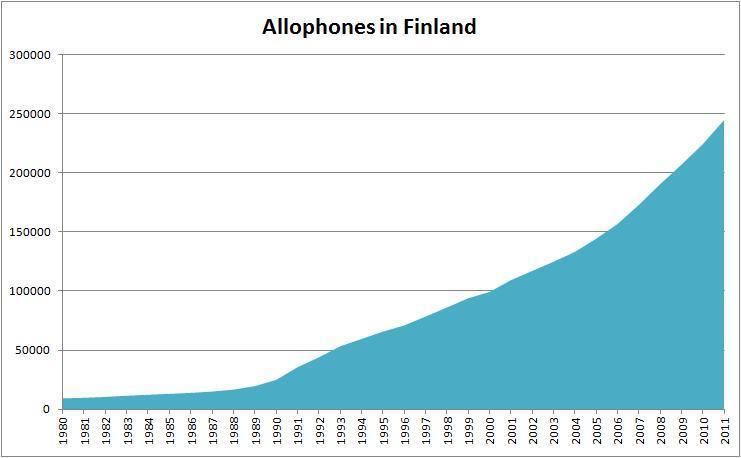 | ||
Immigration to Finland is the process by which people migrate to Finland to reside in the country. Some, but not all, become Finnish citizens.
Immigration has been a major source of population growth and cultural change throughout much of the history of Finland. The economic, social, and political aspects of immigration have caused controversy regarding ethnicity, economic benefits, jobs for non-immigrants, settlement patterns, impact on upward social mobility, crime, and voting behavior. As of 2011, there are 140,000 foreign born people residing in Finland, which corresponds to 2.7% of the population. According to Wikipedia's Finland demographics page this number is very much out of date. Numerous polls in 2010 indicated that the majority of the Finnish people wants to limit immigration to the country in order to preserve regional cultural diversity.
History
Immigration has been a major factor of population growth and cultural change throughout Finland. Today there are 140,000 foreign born people residing in Finland. Foreign born individuals correspond to 2.7% of the population of Finland. However, as of 2011 there are 244,827 persons with a foreign first language (other than Finnish, Swedish or Sami), who account 4.5% of the population. The largest groups appear to be Russians, Estonians, and Somalis. Meanwhile, immigration from Sweden has halted the decrease in the Swedish-speaking population.
